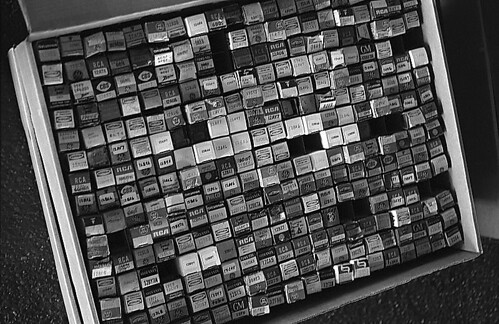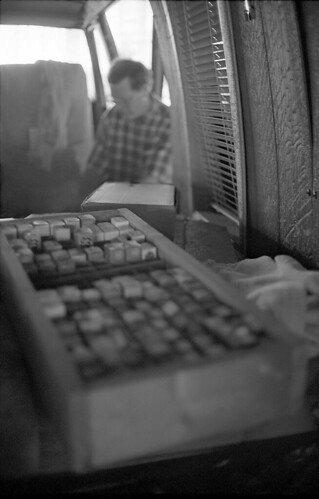
No, don't worry, I'm not going digital-crazy. Although I am talking about the equivalent of small sensors, well, not *that* bad :)
Half-frame is what on the menu today. And I am talking about one of the coolest half-frame scale-focusing camera around, the Olympus Pen EED. An honest to goodness auto-exposure camera with an amazing lens attached to it. And the usual smooth operations expected from vintage Olympus. Everything from opening the back, loading the film, advance and rewind, and shutter release just oozes quality.
The lens, it's an F.Zuiko 32mm (which is close to 50mm on a full-frame cameras). Good for taking snapshots and more. It's a 6-element design lens that is fast, ... f1.7 fast.
The format, it's a half-frame, which is not a big deal in this day and age, where some ASA 400 films are smoother than ASA 100 films of yesteryears. Alas, feeling cheap, I used the on-sale Walgreen 400 film which is about as crappy a film as you can get (and it shows, arrrrgh!). They make nice black and white when converted, though :)
NOTE: There are two versions of this camera, one with the Rapid Agfa cassette, the other with an ordinary 35mm film. Guess which one is reviewed here :)
But all in all, even the crappy film shows of how sharp and contrasty the Zuiko on this camera is. Here's one picture with ample sunlight:

Here's another one that is lighted only by the chandelier itself, and a teeeeeeny bit of ambient light from a revolving door about 20-feet behind me.

Not bad, eh? I keep being amazed at Olympus for putting in such a high power lens into an obviously consumer camera that I bet they didn't think someone would review it in 2007 (41 years after they are first released).
Overall the automatic-exposure mechanism is doing one heck of a job. But one thing that irritates me is that the meter is not located in the lens housing, making it that much more of a hassle to use filters. At first I thought that it can't be done, but when I think about it some more, I can use a filter if I knew how many stops I have to compensate and use the ASA settings to fool the camera.
Ok, on to the fun part. Another bonus for using half-frame cameras are ... DIPTYCH-making :)
These half-frames are designed to do diptychs. It's fun to try to make two pictures seems to have some kind of connection with each other and it's a fertile ground for creativity (and of course, some stretching of imagination :)
This one is titled "DMA in Vivid and Neutral"

This one is "My Shadow"

This one is "Reaching out"

In summary, this camera impresses the heck out of me. The cool retro look is matched by both the build quality and the images. I have a feeling that this one is going to stay with me for a long time. Also, as you probably suspect, it makes a good Osanpo (walk around) camera :)


 ) that most likely is a Cooke-triplet design.
) that most likely is a Cooke-triplet design. )
)






